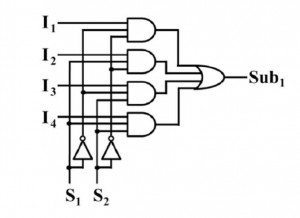When most people read a book they don’t remember every word. They compress the story down to the main points and remember those. The reverse is also true – given a few facts most people can embellish a story to a suitably lengthy tale of adventure and mystery.
These data compression/decompression processes are called logic operations and are a central theme in information theory. They are also replicated in biological systems where scaffolding proteins within the regulatory cellular networks carry out the operations. However, there has been no synthetic DNA-based system that can carry out this data compression/decompression process, until now.
Itamar Willner from the Hebrew University of Jerusalem and colleagues have developed such a system based on Mg2+-dependent DNAzyme subunits. Unlike previous approaches where the demonstration is done using two inputs and one output the team have investigated enhanced multiplexing in the compression process with four inputs producing one output.
Additionally they have also demonstrated the expansion of a single input to produce two outputs. Having such systems based on nucleic acids also raises the possibility of resetting the computational module. This means you could reconfigure and change its operation in situ by the addition of suitable complementary nucleic acid strands.
This article details important advances in DNA based logic networking and raises the potential to compress information held within genes into a single output. It also raises challenges for the future that must be overcome before these synthetic biomolecular computational systems can control natural intracellular processes.
For more, read the Chemical Science Edge article in full:
DNAzyme-Based 2:1 and 4:1 Multiplexers and 1:2 Demultiplexer
Ron Orbach, Francoise Remacle, R. D. Levine and Itamar Willner*
Chem. Sci., 2013, Accepted Article
DOI: 10.1039/C3SC52752B
Iain Larmour is a guest web writer for Chemical Science. He has researched a wide variety of topics during his years in the lab including nanostructured surfaces for water repellency and developing nanoparticle systems for bioanalysis by surface enhanced optical spectroscopies. He currently works in science management with a focus on responses to climate change. In his spare time he enjoys reading, photography, art and inventing.











